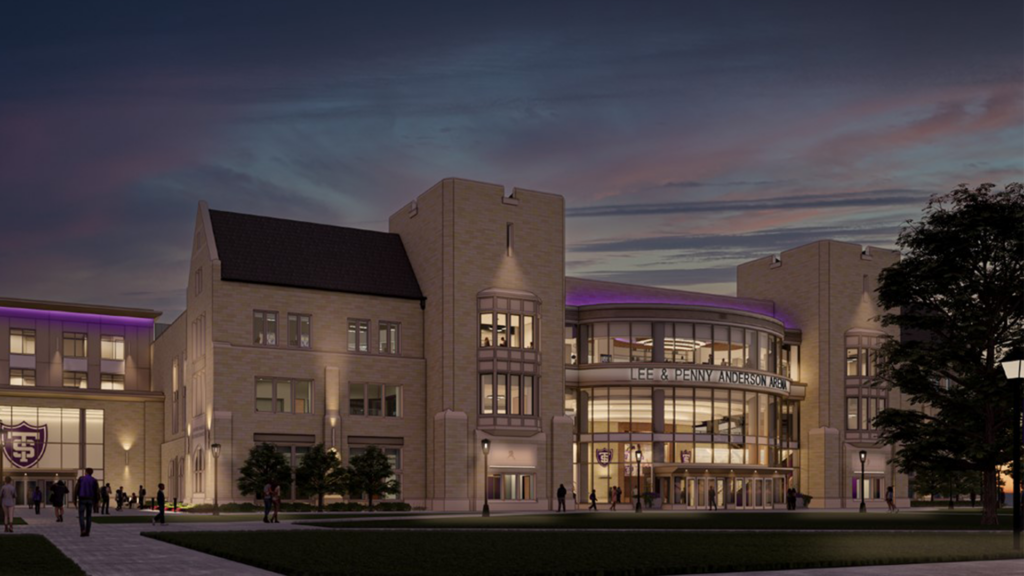Web Wednesday: Trends in Student Use of Social Networking Sites
From Information Resources and Technologies
Each year, the EduCAUSE Center for Applied Research (ECAR) conducts a national survey of more than 27,000 undergraduate students to gain a better understanding of students’ behaviors, attitudes, skills and preferences with information technology. This year’s study included new questions on undergraduate students’ use of social networking sites (SNS) such as Facebook, MySpace and LinkedIn. The study explored why students choose to use these sites, and whether students have concerns regarding privacy and sharing of personal information.
More students use social networking sites
Data from the 2008 study show an increase in the percentage of survey respondents who use social networking technologies, from 72 percent in 2006 to 80 percent in 2007 and increasing to 85 percent in 2008. Of the St. Thomas freshmen and seniors who participated in the 2008 survey, nearly all (93 percent) indicated they use social networking sites.
A growing percentage of students are using Facebook, MySpace and similar sites every day. In 2006, just 33 percent of all ECAR survey respondents used SNS on a daily basis compared with 57 percent in the 2008 study. Use of social networking sites by St. Thomas students appears to be increasing as well. In the 2007 study, 46 percent of UST respondents reported using social networking tools on a daily basis. In 2008, nearly three-fourths of St. Thomas survey participants indicated they use social networking sites on a daily basis.
The use of SNS also varies somewhat by age: Just over 95 percent of students aged 18 and 19 use social networking sites in contrast with 37 percent of students 30 and older. Students’ preference for certain sites also differs by age. Facebook is clearly the preferred choice for younger students. Both Facebook and MySpace are popular with students aged 25 to 29; however, students aged 25 and older lean toward using MySpace. Professional networking sites such as LinkedIn also tend to be used more by older college students.
Staying connected with friends
Not surprisingly, the main reason undergraduate students use social networking sites is to stay connected. Just over half of ECAR survey participants say they use SNS to find out more about people they may or may not have met, and as a way to invite people to events; additionally, nearly two-thirds use sites to share photos, videos and music. Similarly, staying in touch with friends, learning more about other people, and sharing content are some of the main reasons St. Thomas participants use social networking sites.
Why do students avoid using social networking sites? Of the 15 percent of students in the study who indicated they do not use social network sites, a lack of interest along with security and privacy concerns are among the main reasons they choose not to participate. Seventeen of the 242 St. Thomas participants indicated they do not use any social networking sites citing lack of interest and time.
Security and privacy concerns
What type of personal information are students making available and to what extent are students concerned with privacy and security when using social networking sites?
Most students have one profile that they update on a monthly basis. Typically, students include their name, photo and e-mail address on their profiles. The amount of information students reveal on their profiles varies with younger students revealing more information about themselves. In addition to general contact information, slightly more than half of students in the 18 to 24 age range revealed their full birth date (compared to only 17 percent of students 30 years and older). Fewer students overall reveal their workplace information and cell phone number; however, younger students do tend to include this information in their profile. Only 3 percent of students aged 30 and older revealed their cell phone numbers in their profiles, compared with just under a quarter of 18 to 24 year olds.
What information about yourself do you reveal in social networking Web sites?
UST Respondents
All Respondents
Photos
92%
84%
E-mail address/IM screen name
86%
78%
Full date of birth
64%
57%
Workplace
46%
37%
Cell phone number
24%
21%
Class information/schedule
21%
17%
Spring break/holiday plans
16%
13%
Address/home phone number
9%
9%
The ECAR survey data suggest that students are aware of potential privacy threats and restrict access to their profiles. Less than 10 percent of St. Thomas students and just 11 percent of all ECAR survey participants do not restrict access to their profile in some way. A small percentage of students (15 percent) are “not at all” concerned with misuse of their personal information or with security issues such as exposure to files with viruses. Cyber bullying or online stalking is not a concern for some students (38 percent) and is a small concern for less than a quarter of survey respondents.
Educational use of social networking sites
With a large number of students using social networking sites it is not surprising that faculty and staff are looking into how capitalize on the advantages of SNS for pedagogical and student support services; however, it appears that most students do not use social networking Web sites as a formal part of their courses. At the time the study was conducted (spring 2008) only 15 percent of St. Thomas respondents and 17 percent of all ECAR respondents indicated that SNS were being used in their courses.
Only a small percentage (5.5 percent overall and 2 percent at UST) use SNS for communicating with instructors. More often, however, students use SNS informally as a way to communicate with their friends and classmates about cours
e-related topics. Just under half of all respondents in the study, and fully 63 percent of St. Thomas students, indicate they use social networking sites as a way to communicate with their classmates about their courses.
Early research1 on the pedagogical benefits of social networking technologies suggests that SNS could serve as a way to increase student engagement by adding a social peer-to-peer component and to increase students' digital literacy skills. As Nicole Ellison writes in the second chapter of the ECAR study, "The social affordances of SNSs, such as making identity information more salient during class discussions or supporting peer-to-peer connections, can accommodate different learning styles inside and outside the classroom."
* * *
1Ellison, Nicole. "Facebook Use on Campus: A Social Capital Perspective on Social Network Sites." Presentation at the ECAR Symposium, Boca Raton, FL, Dec. 5-7, 2007, available from https://www.educause.edu/ecar.
* * *
About the ECAR Study
Each spring, a random sample of freshmen and seniors at St. Thomas are invited to participate in the EduCAUSE Center for Applied Research survey. The study is a national, longitudinal survey of more than 27,000 undergraduate students and seeks to gain a better understanding of students’ behaviors, attitudes, skills and preferences with information technology. The full ECAR Study of Undergraduate Students and Information Technology for 2008 can be found at www.educause.edu/ers0808/135156.







